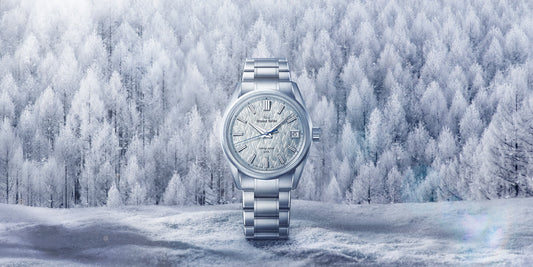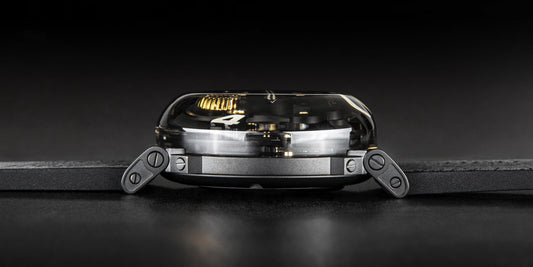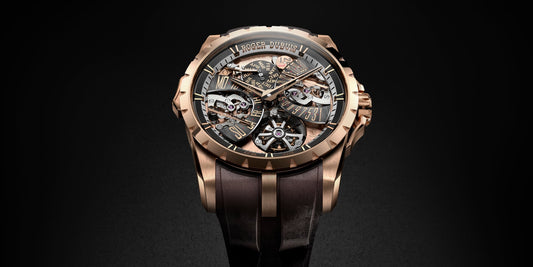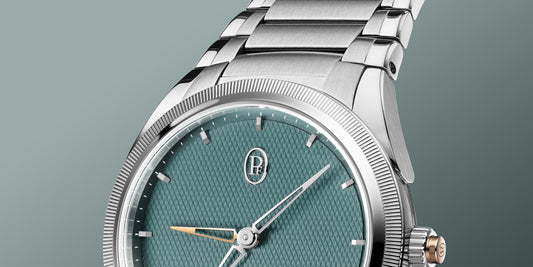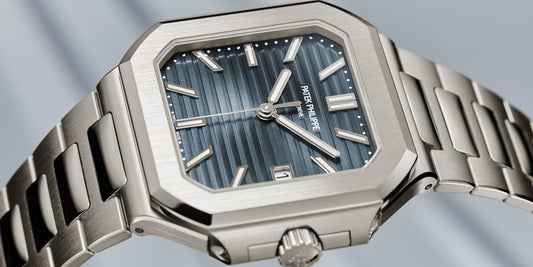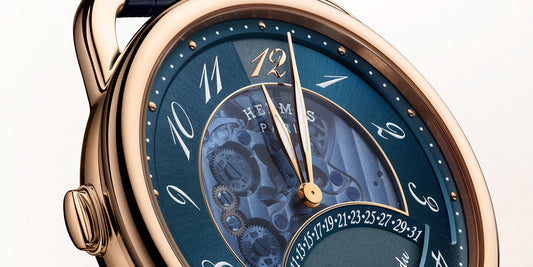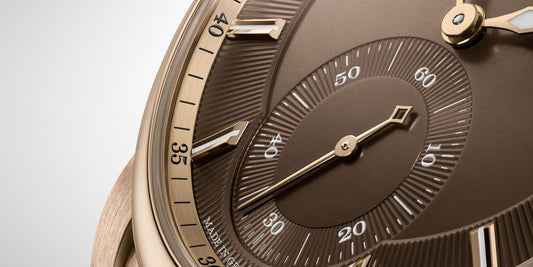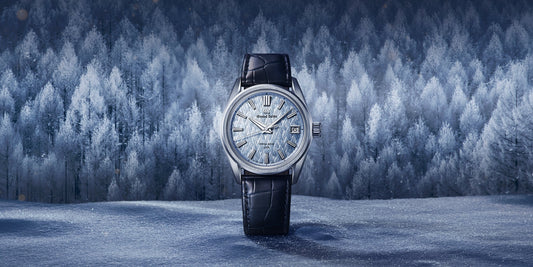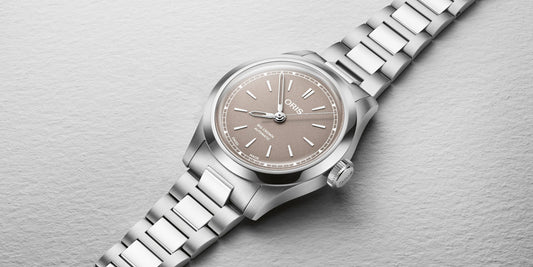Fitting a new leather strap to your favourite watch is not just about refreshing its appearance—it's also an opportunity to elevate its comfort and style. Whether you're replacing a worn-out band or simply looking to upgrade your watch's look, choosing and fitting the right leather strap can make all the difference. In this guide, we'll walk you through the process step-by-step, from selecting the perfect strap to ensuring a seamless installation, so your timepiece feels as good as it looks. Let’s get started on giving your watch a new life with a stylish leather upgrade. Here's our step-by step guide for How To Fit a Leather Watch Strap.
Before we start...
- Are you looking to change a metal watch strap? Click Here.
- Are you looking to install a nylon watch strap? Click Here.
- Are you looking to fit a leather watch strap? Keep reading…
Table of content
Step One:
Check the lug width of your watch.
The lug width is the measurement between the two lugs and is measured in millimetres. You can usually find this information amongst the technical specifications on the watch manufacturers website but if you’re at all unsure you can check out our handy guide on how to measure lug width.

It’s also worth considering how far out from the case the lug holes are! On paper, most of us enjoy the idea of a thickly padded leather strap, but sometimes if the lug holes are positioned too close to the case, a thickly padded leather strap may not fit or, even worse, might cause damage to the leather where it scuffs against the case between the lugs. If this is the case you’ll be better off with a lightly padded or unpadded strap, luckily we have plenty to choose from here.
How do I know which leather strap will fit my wrist?
If you have an average or large wrist size, you should be fine with one of our standard length straps, but if you have petite wrists you'll want to go for a shorter length strap. Why not check out our guide on choosing the right watch strap for you? Once you’ve established that, you’re ready to get going with our step-by-step guide to fitting the replacement strap to your watch.
Step Two:
Make sure you have the correct tools to fit your watch strap.
You can find an extensive selection of watch tools in the accessories section of our website. In this case, you might need a spring bar tool to replace the strap on your watch.
What is a spring bar?
A spring bar is a round steel bar with spring-loaded telescopic ends that secure the watch strap to the watch case. When fitting any kind of replacement strap, these spring-loaded ends must be compressed. Then, once in place the spring-loaded ends decompress, filling the lug hole to give a secure fit.

The vast majority of WatchGecko leather replacement straps are fitted with quick-release spring bars which allow you to swap straps fuss-free, without the use of any additional tools. If your watch strap has been purchased elsewhere though, or if it was supplied with the watch head, you might need a spring bar tool to remove it.

Which spring bar tool should I use?
If you’re the original owner of the watch and the strap is factory fitted, it’s usually best to use the spring bars that are already fitted. If not, you’ll need to order some. We stock three main types. Choose the one that best suits your needs. For most, this will be the standard type. Be sure to head over to our recent article Your Watch Strap Questions Answered to learn more about the different types of spring bars.
WatchGecko’s Top Tips:
It’s a good idea to change straps sat at a table or other solid surface but use a rubber/foam matt, or other soft surface cover so that you reduce the chances of scratching your watch and also to help prevent it from moving around too much.
When removing any kind of strap, it’s always best to ensure that the spring bar is pushed out towards the rear of the watch so that any light scratches will not be seen when the watch is worn.
For additional protection against scratches, consider taping the lugs.
Step Three:
Remove the strap.
How do you remove a Quick-Release Strap?

If you find that the watch strap you want to replace is pre-fitted with quick-release spring bars, you’re in luck. You won’t need any tools at all and the spring bar is retained in the strap, so there’s no chance of losing it, or having it ping off across the room. If for any reason you want to remove the supplied quick-release spring bars, you can check out this easy video guide.
How to Remove a strap without Quick-Release spring bars.
Lay the watch face down on either a padded mat or soft cloth, ensuring there is a firm surface such as a table or bench beneath.
Then, using your spring bar tool, carefully position the v-shaped end so that it slots between the end of the strap and the inside of the lug. Applying light pressure against the spring bar, gently pry the spring bar out by pulling to towards the centre of the watch until you hear/feel it release.
When changing your leather strap you'll need to slot your spring bar tool between the leather and lug. Depending on the strap, you may not have much space to get the spring bar in, so be careful, as it’s easy to damage the edge of the strap, especially on leather.
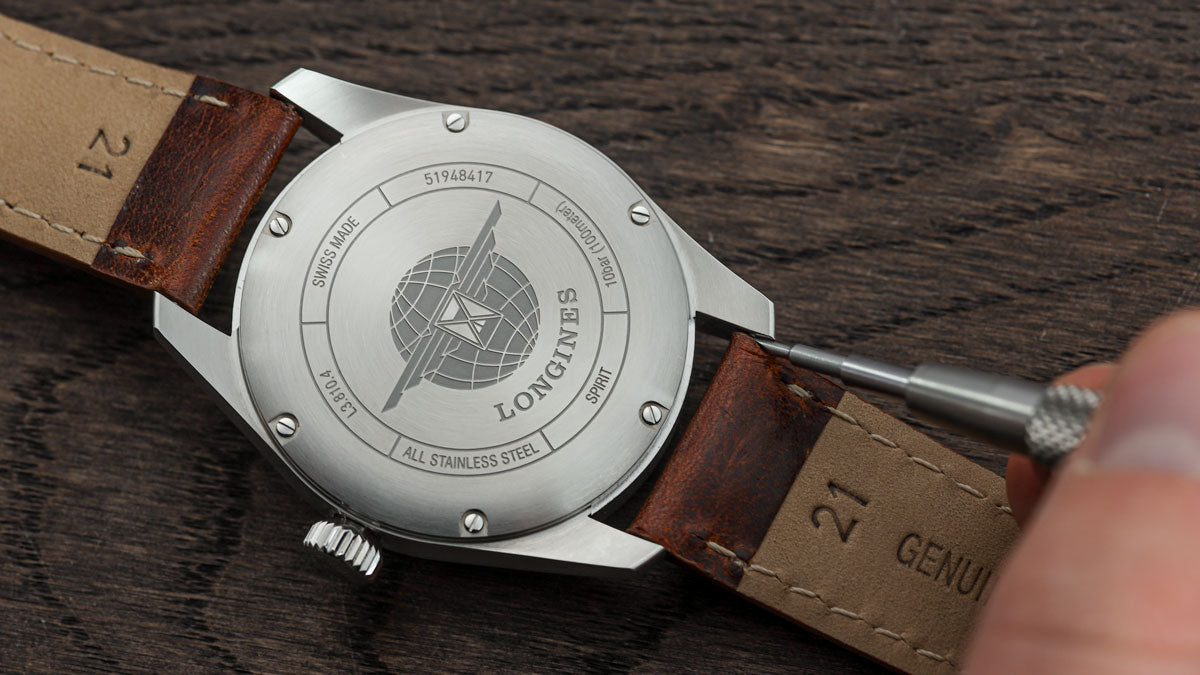
Step Four:
Fit your new leather replacement strap.
Which way around does a leather strap go?

The buckle side of the strap is nearly always attached to the 12 o’clock side of the watch, and the tail end at the 6 o’clock side. (Notable exceptions include Grand Seiko and some Seiko straps).
How to fit a new quick-release leather strap.
Our quick-release straps make fitting a cinch. Simply position the opposite end into the lug hole. Once secure, position the other side of the spring bar so that it roughly sits over the lug and then squeeze the bar inwards whilst positioning the strap until you feel/hear the spring bar snap into place. Give the strap a light tug to make sure its secure and you're good to go.
How to fit a regular leather strap.
Tip: Remember where the lug hole position is so that it’s easier to accurately position the spring bar into place.

Place one end of the spring bar fully into one of the lug holes.
Once in place, position the other side of the spring bar so that it roughly sits over the lug.
Then, using the spring bar tool, compress the spring bar whilst lowering the end into place, aiming for the lug hole. Getting the second end of the spring bar into place is not always easy, so you may have to carefully move the strap around within the confines of the lug until you feel the spring bar locate and snap into place.
For extra finesse, refit the original branded buckle. In order to do this, you’ll need to make sure that the replacement strap has the same width on the buckle end as the original. To make it easier to find the right strap, we always state buckle end widths in our product listings. You can check out a guide on changing the buckle here.
Repeat this process for the other piece of the strap
Give both ends of the strap a light tug to make sure they are secure and you're good to go.

CAUTION: Bear in mind that even by closely following the instructions, as every watch enthusiast will tell you, changing a watch strap is not completely without risk and it’s not unusual to develop small scratches around the lugs, especially if you’re changing your leather watch strap regularly. However, our carefully considered instructions should at the very least help minimise this risk.
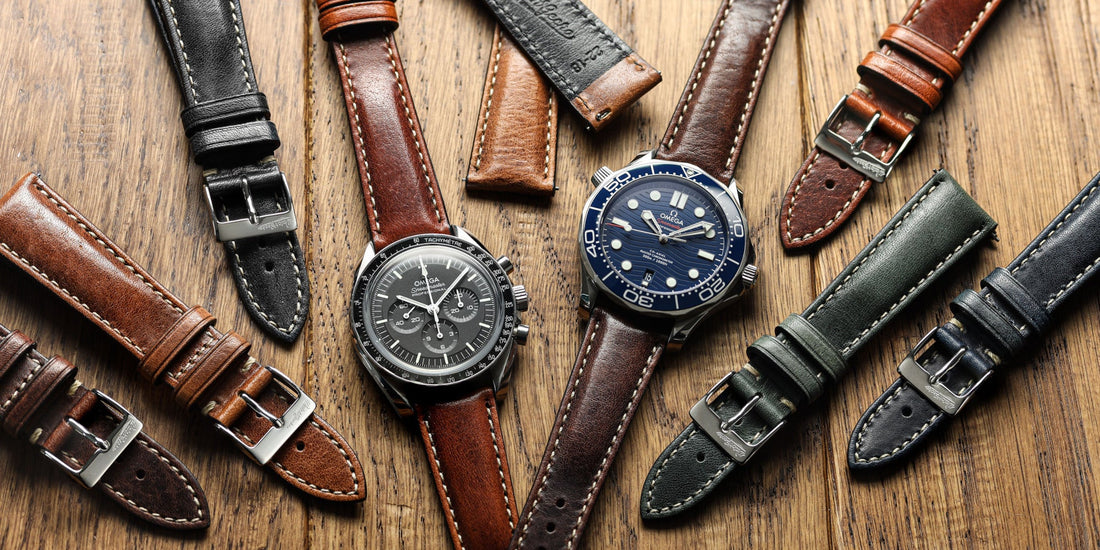






![Grand Seiko Spring Time & Suwa Lake Strap Showcase [Updated 2024]](https://cdn.shopify.com/s/files/1/0609/1636/7523/files/Grand-Seiko-Suwa-Lake-Highley_e19aa84a-4cdb-48ee-9528-79cec0d79822_550x.jpg?v=1725893706)





